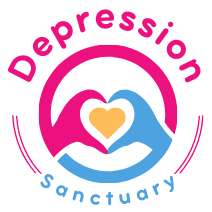If you suffer from depression, the possibility always exists that at some point you may have thoughts about harming yourself. Unfortunately, when you are in the midst of a crisis, you will probably not be thinking clearly or making the best choices. For this reason, it is a very good idea to make a suicide safety plan. Then, if the need arises, you will be prepared with a step-by-step plan for how to handle things until your urges pass.
When you are feeling well, sit down with someone you trust to discuss what your plan will include. Ideally this person will be the same person you plan to call upon when it comes time to carry out your plan, such as a good friend, someone in your family or your doctor or therapist.
You should write down your safety plan so that you can refer back to it when needed. Keep it in a secure, easy-to-remember location where you can quickly get to it in the future.
Making Your Suicide Safety Plan
You want to include the following items in your plan, making sure to keep them in the same order as below:
1. When should I use the plan?
Make a list of any warning signs that might precede suicidal thoughts and feelings for you. Think about any situations which have triggered suicidal urges in your before. Also, consider what thoughts, feelings or behaviors that you usually engage in when suicidal urges strike. Then, when you begin to see any of these warnings signs in the future, you will know to put your suicide safety plan into action.
2. What steps can I take to calm or comfort myself?
Make a list of all of the activities that you find soothing, such as listening to music or having a warm bath.
3. What are my reasons for living?
When you are in the middle of a crisis, you will be feeling a lot of pain and distress; it will be very difficult to focus on what is good in your life. By making a list like this when you are feeling well, you will be able to remind yourself that there are some things worth living for.
4. Who can I talk to?
Make yourself a list of names and contact information for those people that you know will be there for you when you need the support. Include as many people as you can so that you have alternatives in case some of the people aren’t currently available.
5. Who can I call for professional assistance?
Make a list of all the professional resources available to you, along with their relevant contact information. Be sure to include your psychiatrist and/or therapist as well as suicide hot line numbers.
6. How can I make my environment safe?
If there are particular items that you believe you are likely to use to hurt yourself, you will want to have a plan in place for how you will remove them from the area or secure them. You may also want to have options in place for where you can go to keep safe until your suicidal feelings have passed.
7. What can I do if I’ve done everything else, but I still don’t feel safe?
If all else fails, go to your closest hospital emergency room and ask for help.
To make things easier for yourself, either write the hospital’s name, address and directions for getting there in your plan or program it into your GPS. If you don’t feel that you can safely drive yourself to the hospital, call a friend or your local emergency services for assistance.
How to Use Your Plan
You should put your suicide safety plan into action anytime you notice any of the warning signs that you outlined in your plan.
Go through each step in your plan one by one. If any given step helps to alleviate your distress, then stop there. If it doesn’t, then proceed to the next step. Keep going through each step until you feel safe.
Photo by Ylanite Koppens from Pexels
Nancy Schimelpfening is the founder of Depression Sanctuary. Unless otherwise stated, all of the content on Depression Sanctuary is written by and maintained by Nancy. Nancy has a master’s degree in community health education from Old Dominion University in Norfolk, VA. She was the About.com (now Verywell.com) expert on depression from 1998-2016. She has also written for other online publications, including Healthline, Healthgrades Professional, Health Digest, and MindBodyGreen.

